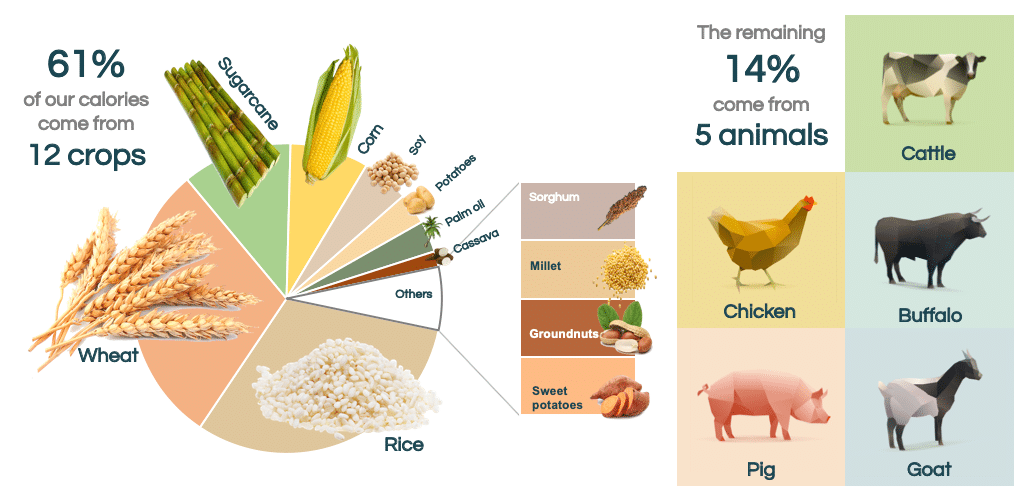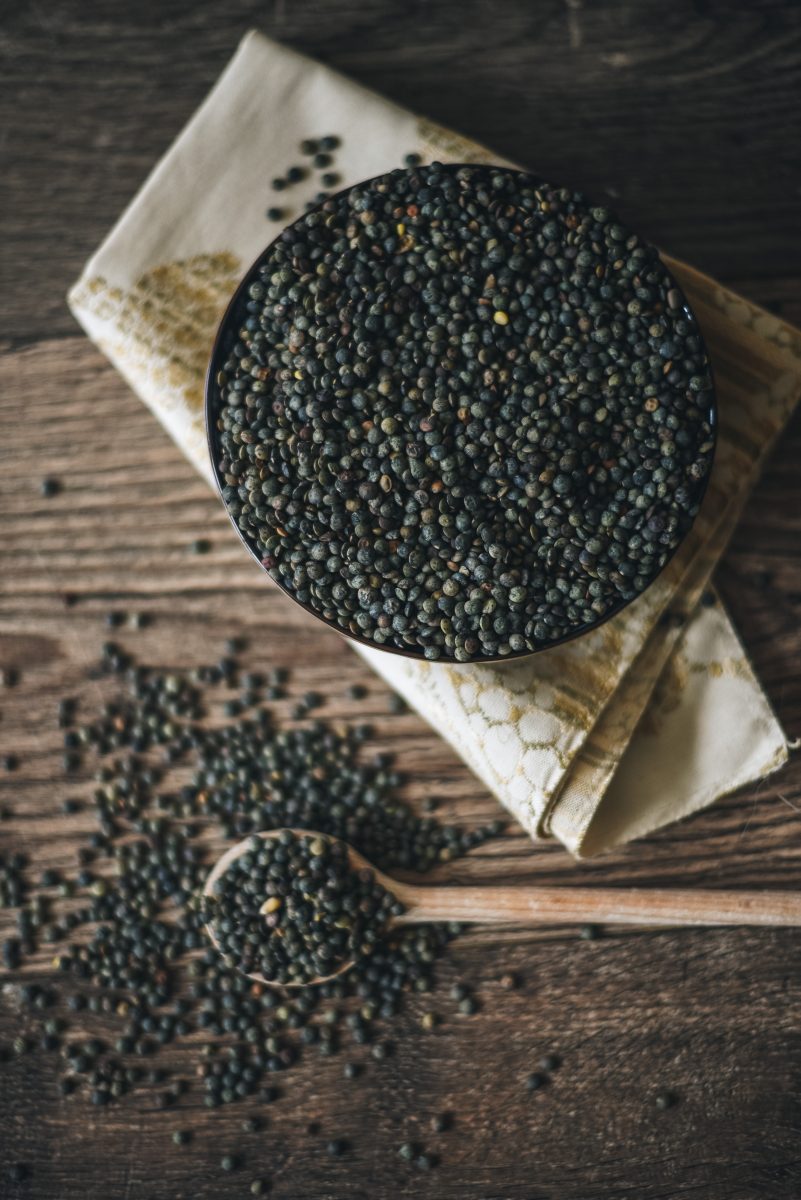The 12 crops and 5 animals that feed us
Janelle Limqueco, Innovations Manager, NamZ Pte Ltd
A staggering 75% of our calories come from just 12 crops and 5 animals, leading to:
- reduced diversity in our nutrition,
- crops (and animals) that are vulnerable to climate volatility, pests, and diseases, and
- farmers with limited choices of crops to grow
300,000 plants are actually potentially fit for consumption, so there is great opportunity for us to eat a greater variety of crops

What are these crops and animals that you speak of?
Using the latest available data from the FAO database, on the left you can see the 12 crops and 5 animals we rely on the most:
Why does it matter?
Relying on a few crops for food poses challenges to our health, our food supply, and the farmers who grow them.
Our health
Go to the supermarket and you will probably find the top 4 crops (wheat, sugarcane, and rice, and corn) in majority of the products on the shelves. These crops are carbohydrate-rich and protein-poor. Fibre and micronutrients are often removed during food processing, leaving us with mostly calorie-dense food products.
Our food supply
Paradoxically, the system that allowed us to have plenty of food today could be the very system that threatens our food supply. As we pursued maximizing yields, diversity of crops have shrunk into single, standardized varieties that allowed for economies of scale. History shows us the dangers of relying on single varieties of crops. Between 1845 to 1849, 20 to 25% of the Irish died from the Irish Potato Famine when a potato blight wiped out potato crops all over the country. More recently, our supply of bananas is being threatened by the Panama disease that is killing banana plants from Asia to Africa because of our heavy reliance on a single banana variety, the Cavendish. Diseases, pests, and a volatile climate can all threaten the viability of our food supply.
Our farmers
In our increasingly consolidated modern food system, retailers and manufacturers hold significant power and leverage, dictating the types of crops that farmers should grow. After all, relying on only a few crops as raw ingredients simplifies inventory management and supply chains. With only a few crops in demand, many farmers are left with no choice but to grow these crops and be subject to more intense competition with other farmers, leading to devastatingly low returns enough to dissuade young farmers from continuing with farming.

What can you do?
As a consumer, you can eat less of the top crops, especially wheat, rice, sugar, and corn, and instead look for alternative grains, legumes, fruits, and vegetables. Moringa, Bambara groundnuts, amaranth, proso millet, winged beans, lentils, lupin, and pumpkin are some examples of crops that have great nutritional value, are resilient to droughts, and can grow in poor soils where other crops fail.
By consuming these “Future-Fit Crops”, you are not only introducing more nutrients into your body, you are also helping to create a market for alternative crops that will ensure a more resilient food supply and more choices for our farmers.